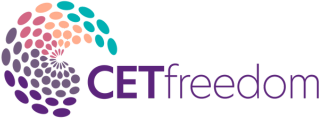
The world of technology is continuously evolving, and one of the latest trends in this field is the introduction of chatbots. Chatbots are computer programs that can mimic human conversations and have been used in various industries, including customer service, healthcare, and education.
Chatbots have become so advanced that they are now used for coaching and mentoring. While chatbots can be helpful in many ways, their introduction in coaching raises concerns about their potential negative impact on human interaction. In this article, we will explore the potential drawbacks of using chatbots for coaching and their effects on human interaction.
The Limitations of Chatbots in Coaching
Chatbots have several limitations in coaching, which can negatively impact human interaction. The primary rule is that chatbots lack emotional intelligence, empathy, and the ability to understand human emotions. They cannot pick up on nonverbal cues, such as facial expressions or tone of voice, which are essential in coaching.
Chatbots cannot provide personalized feedback without emotional intelligence, and their advice may be impersonal or insensitive. This lack of emotional intelligence can lead to a breakdown in communication, which is crucial in coaching.
Another limitation of chatbots is that they are programmed with predetermined responses and cannot improvise. They may need help to provide creative solutions or tailor their advice to suit individual needs. This limitation may prevent chatbots from providing effective coaching and lead to users’ frustration. Chatbots cannot also build relationships with their users, which is critical to coaching. Building a relationship with a coach involves trust and rapport, which chatbots cannot provide.
Impact of Chatbots on Human Interaction
The introduction of chatbots in coaching may harm human interaction. Human interaction involves face-to-face communication, which is vital in coaching. Coaches can pick up on nonverbal cues through face-to-face contact and build client relationships. On the other hand, chatbots lack this ability, and their responses may come across as cold and impersonal. This may result in clients feeling detached and disconnected from their coaches.
Moreover, chatbots may prevent clients from developing the necessary skills to interact with others effectively. Interacting with others requires emotional intelligence, empathy, and understanding of nonverbal cues. Clients relying solely on chatbots for coaching may miss out on developing these skills. This may impact their ability to interact with others effectively, which is crucial for personal and professional success.
Importance of Human Interaction in Coaching
Human interaction is a crucial aspect of coaching. Coaching involves building relationships with clients, which requires trust and rapport. Building relationships with clients involves face-to-face communication, which allows coaches to pick up on nonverbal cues and understand their clients’ emotions. Through human interaction, coaches can provide personalized feedback and tailor their advice to suit individual needs. This is essential for effective coaching.
Human interaction also allows clients to develop the necessary skills to interact with others effectively. Interacting with others involves emotional intelligence, empathy, and understanding nonverbal cues. Through human interaction, clients can learn and develop these skills crucial for personal and professional success.
Finding a Balance between Chatbots and Human Interaction
It is essential to recognize that chatbots can be a valuable resource for coaching. They offer 24/7 support and can be more cost-effective than hiring a human coach. This is particularly beneficial for individuals who may need access to coaching due to financial or geographic constraints. Chatbots can provide individuals with guidance and support, especially during stress or uncertainty.
However, finding a balance between chatbots and human interaction in coaching is essential. Chatbots have limitations in emotional intelligence, empathy, and building relationships, all crucial aspects of effective coaching. On the other hand, human coaches can provide personalized feedback, tailor their advice to individual needs, and build meaningful relationships with their clients. These are all critical components of successful coaching outcomes.
Therefore, coaches should use chatbots as a supplement to human coaching rather than a replacement for it. Chatbots can provide additional support and resources to clients, such as automated reminders, prompts, and exercises. This can enhance the coaching experience and give the clients a more comprehensive approach to achieving their goals. However, coaches should not rely solely on chatbots, as this may lead to a breakdown in communication and ultimately hinder progress. By balancing chatbots and human interaction, coaches can provide their clients with the most effective and beneficial coaching experience.
Conclusion:
In conclusion, while chatbots have several benefits in coaching, such as 24/7 support and cost-effectiveness, their limitations in emotional intelligence and inability to build relationships may hurt human interaction. Human interaction is a crucial aspect of coaching, and it allows coaches to provide personalized feedback and tailor their advice to suit individual needs. Clients can also develop the necessary skills to interact with others effectively through human interaction.
Therefore, finding a balance between chatbots and human interaction is essential. Coaches should use chatbots to supplement human coaching rather than rely solely on them. By doing so, coaches can provide their client’s additional support and resources while building meaningful relationships with them. Ultimately, the relationship between the coach and the client leads to successful coaching outcomes, and chatbots cannot replace that human element.






